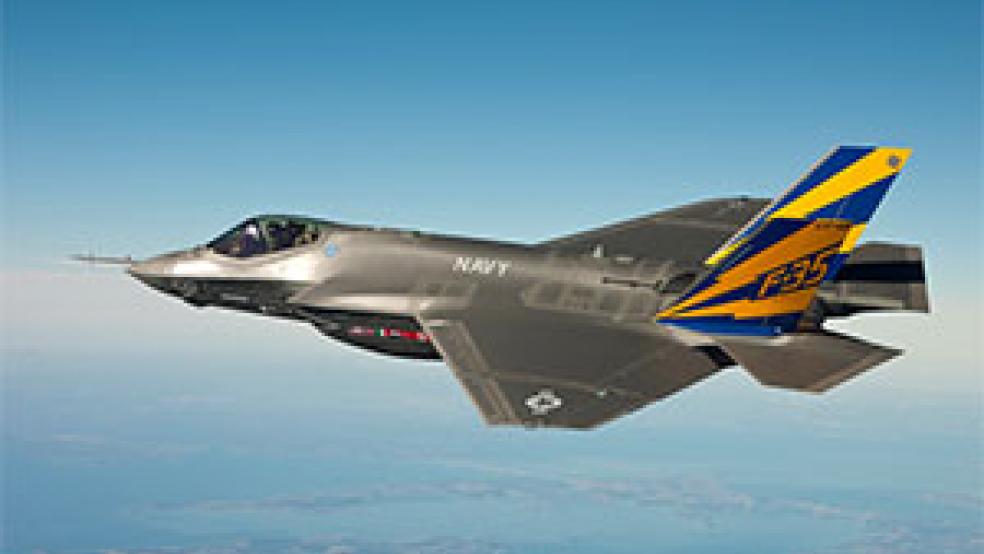In a recent interview with Business Insider, Justin Bronk, a research fellow specializing in combat airpower at the Royal United Services Institute, dropped a bombshell about the US's $1 trillion F-35 program:
"The F-35 cannot outdogfight a Typhoon (or a Su-35), never in a million years."
Related: A $360 Million US Navy Combat Ship Becomes an ‘Engineering Casualty’
In earlier stages of the F-35's development, some bad reports came out claiming it lost in simulated dogfights to the F-16, a legacy platform the F-35 is meant to replace in the US Air Force.
The latest news coming out about the F-35's dogfighting ability has taken a visible turn to the positive, but dogfighting was never the main purpose or strong suit of the Joint Strike Fighter.
For that reason, older fighters like the Eurofighter Typhoon or the Sukhoi Su-35 could most likely outmaneuver and destroy an F-35 in a close-range confrontation.
While every credible report indicates that the F-35 will dominate in stealthiness, situational awareness, and beyond-visual-range confrontations, up-close dogfights in which opposing fighter pilots jockey for position and a clean shot depend on a different set of characteristics.
Thrust-to-weight ratio and wing loading, or the loaded weight of the aircraft divided by the area of the wings, make up some of the chiefly important factors in dogfighting.
"Typhoon and Su-35 both have positive thrust-to-weight ratios at combat loadings, meaning that they can accelerate vertically and generally both maintain and regain energy in a turn much more successfully than the F-35 (particularly the heavier B and C models)," Bronk said.
Related: The Air Force Is Looking for a Cheaper Alternative to the A-10 Warthog
The F-35 does have a positive thrust-to-weight ratio, but it's unclear whether that will remain when the aircraft is loaded up with fuel and ordnance for combat.
Ultimately, having small wings and a design more geared toward stealth than kinematics hurts the F-35's dogfighting prospects.
"A low wing loading means that Typhoon and Su-35 can sustain much tighter turns than the F-35 whilst also creating less induced drag and losing less energy," Bronk said.
In the case of the Russian Su-35, an adversary much more likely to face the F-35 than the Typhoon, the F-35 overcoming the Su-35's supermaneuverability while dogfighting seems an insurmountable task.
"Su-35 also has thrust-vectoring engines, meaning that it can maintain control and continue to point its nose where the pilot wants even after the wings have stalled (called supermaneuverability) which is a potentially large advantage within visual range and at low speeds," Bronk said.
Not only does stealth limit the F-35's mobility, but it also limits its capacity for ordnance.
"Typhoon and Su-35 also carry larger missile loadouts than F-35 in normal combat configurations, meaning that at close range they have twice as many infrared seeking missiles to fire at their opponents," Bronk said.
As Business Insider previously explored, infrared tracking is key to finding and fighting advanced stealth aircraft like the F-35.
But none of this would be news to the US Air Force, which has intentionally sacrificed dogfighting abilities for stealth and situational awareness. The whole point of the F-35 is to see enemy jets from far beyond visual range and engage them with advanced missiles.
According to Bronk, neither an Su-35 nor a Typhoon would see the F-35 until it is very close, putting the legacy jets at the mercy of the more advanced fifth-gens, which can "avoid them, engage them, or position themselves for an engagement entirely on their terms."
So while an F-35 most likely cannot win a dogfight against a Typhoon or an Su-35, its game-changing capabilities at long range all but guarantee it will never have to.
This article originally appeared on Business Insider. Read more from Business Insider
Traders are loading up bets on a market outcome that should make everyone nervous
The US government just moved to block a deal between 2 farming giants




